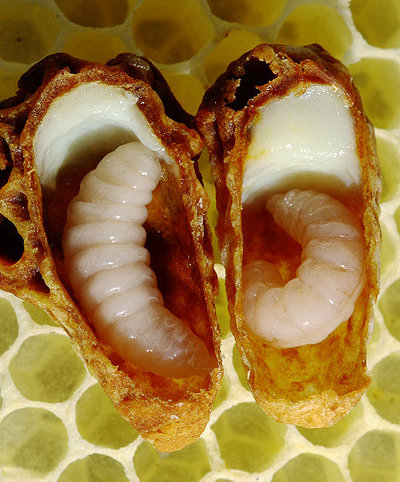Royal jelly
Royal jelly is a substance produced by honey bees to feed to developing larvae. Pollen contains protein so young nurse bees eat it to produce bee milk, often called royal jelly. This is secreted from glands in their heads and fed to the larvae to help them grow.
It is called royal jelly because it is also the only thing that is fed to the queen bee. When a larva is chosen to be a queen it is fed huge amounts of royal jelly and this causes it to develop into a queen rather than a worker, increasing its lifespan from 6 weeks to an average of 3-4 years, so it's not surprising some people believe it can benefit our health!
We harvest the large amounts of royal jelly that can be found in the queen's chamber and use it in various cosmetic products such as hand cream and shampoo. The effect that royal jelly has on us is not fully understood but some studies have shown evidence for it doing a range of things, from giving us more energy and getting rid of wrinkles to helping fight cancer.

A photograph of two queen cells that have been opened to show the queen larvae and royal jelly (white substance at the top of the cell).
Photograph by Waugsberg licensed under Creative Commons.
Other names for (or types of) Royal jelly include:
- Bee milk
Related terms
- Aculeate
- Africanised honey bees
- Apoidea
- Beeswax
- Drone
- Eusocial
- Honey
- Honey bee
- Propolis
- Queen
- Queen cell
- Varroa mite
Related pages on this web site
Back to Glossary
If you have found this glossary useful please consider supporting the Amateur Entomologists' Society by becoming a member or making a donation.
![Amateur Entomologists' Society home page [Logo]](/images/aes-logo-wplant.gif)